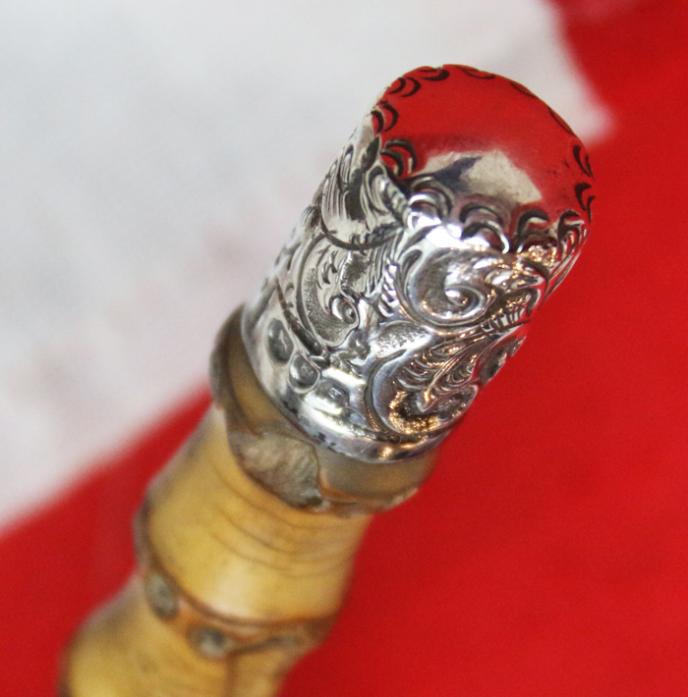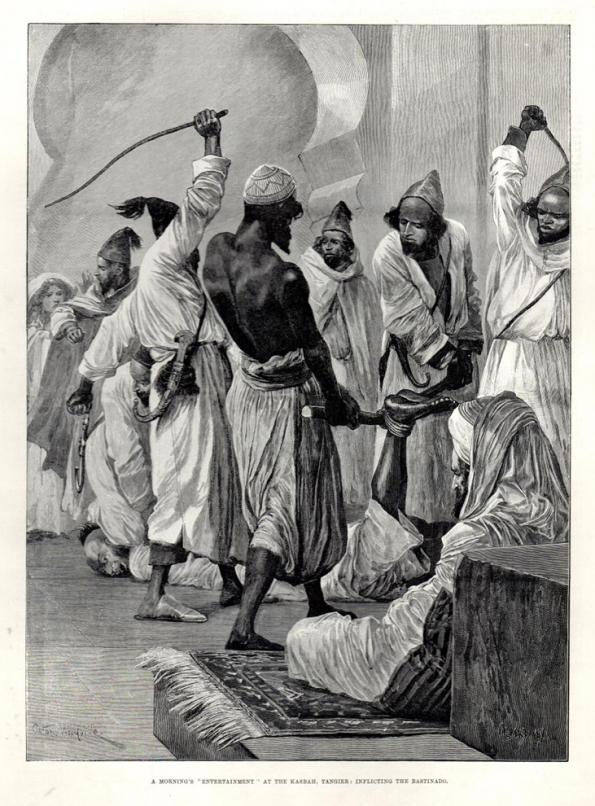A Most Interesting & Fine Original Antique Edwardian Bastinado or Whipping Cane
Very flexible bamboo cane with a London hallmarked silver top dated 1902. In superb 'whippy' condition. Flagellation was so common in England as punishment that caning, along with spanking and whipping, are called "the English vice".
Caning can also be done consensually as a part of personal 'amusement'
Foot whipping, falanga or bastinado is a method of inflicting pain and humiliation by administering a beating on the soles of a person's bare feet. Unlike most types of flogging, it is meant more to be painful than to cause actual injury to the victim. Blows are generally delivered with a light rod, knotted cord, or lash.
The receiving person is forced to be barefoot and soles of the feet are placed in an exposed position. The beating is typically performed with an object like a cane or switch. The strokes are usually aimed at the arches of the feet and repeated a certain number of times.
Bastinado is also referred to as foot (bottom) caning or sole caning, depending on the instrument in use. The German term is Bastonade, deriving from the Italian noun bastonata (stroke with the use of a stick). In former times it was also referred to as Sohlenstreich
The first clearly identified written documentation of bastinado in Europe dates to 1537, and in China to 960.2 References to bastinado have been hypothesised to also be found in the Bible (Prov. 22:15; Lev. 19:20; Deut. 22:18), suggesting use of the practice since antiquity
Foot whipping was used by Fascist Blackshirts against Freemasons critical of Benito Mussolini as early as 1923. It was reported that Russian prisoners of war were "bastinadoed' at Afion camp by their Turkish captors during World War I. However British prisoners escaped this treatment. Also, as used in days gone by at Eton, Harrow, & Rugby, and by Miss Doris Goodstripe, of 37 Railway Cuttings, East Cheam (apparently)
Code: 23926
145.00 GBP







